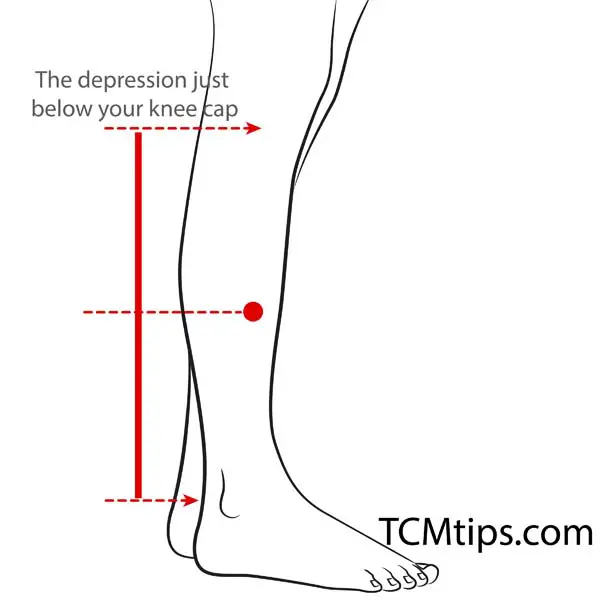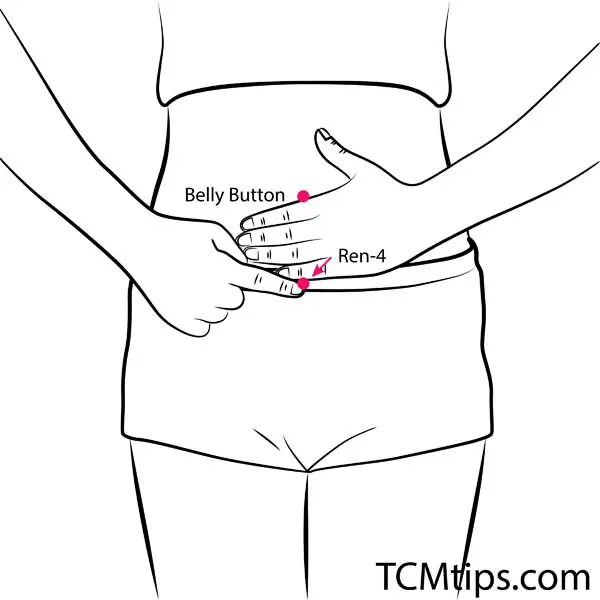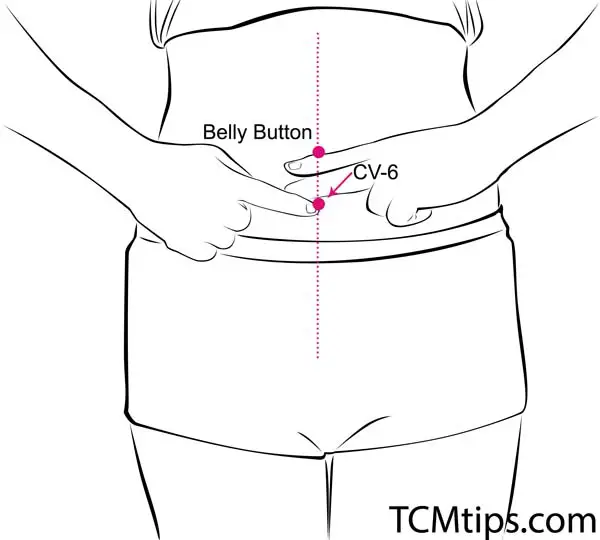Phlegm is the manifestation of pathologic Humidity in the organism. This syndrome from Chinese medicine corresponds to what in Western medicine is associated with deficiencies in the gut microbiome and to the so-called leaky gut. Traditional Chinese medicine clinical treatment for such health conditions involves the stimulation of specific acupuncture points for Phlegm that can have therapeutic effects in the functions of your gut.
What Is Phlegm Dampness?
For a long time, Western medicine doctors and researchers were puzzled and even dismissive about TCM theories around the manifestation of Phlegm Dampness pathologies. In recent discoveries, however, scientific studies carried out by many researchers worldwide have found something that explains what ancient Chinese science already knew.
The big discovery associated with Phlegm Dampness syndrome is that the cells that make up the lining of the walls in the gut are not stuck together as was thought. Instead, the pathological increase in the permeability of the intestine walls allows indigestible proteins to be absorbed, creating a cascade of harmful reactions and causing inflammation and auto-immune diseases.
What Does Phlegm Mean In Chinese Medicine?

In traditional Chinese medicine, the concept of Phlegm encompasses a big spectrum of pathological mechanisms. The basic definition of Phlegm in traditional Chinese medicine goes beyond the western meaning of the word phlegm. In traditional Chinese medicine, Phlegm is the product of stagnation in areas of the body where physiological liquids are concentrated. The interior places where Phlegm Dampness manifests are the Stomach, Lungs, joints, Urinary Bladder, and Intestines.
When food becomes stuck in the Stomach for a long period, it produces Dampness. There are two main causes for food not being digested efficiently, either due to poor digestive function or bad eating habits. The Phlegm Dampness that originates from those two etiologic mechanisms is potentially harmful to all the other systems in the body because digestion is the primary means of metabolism of liquids.
According to traditional Chinese medicine, the Kidneys are also involved in the manifestation of Phlegm Dampness. It is said that when there’s insufficient Kidney Yang, the whole organism’s function is affected since the Kidney Yang provides the motricity for all the other organs, according to the Chinese system.
In traditional Chinese medicine diagnosis, the signs that are indicative of the presence of Phlegm Dampness in the organism can be seen in the tongue when it is scalloped and in the pulse when taken by a trained doctor. Then, the clinical treatment is done with specific acupuncture points for Phlegm to attain specific therapeutic effects.
Symptoms of Phlegm Dampness
- Heavy digestions
- Pasty stools
- Felling heavy
- Scalloped tongue
- Constant tiredness
- Edema
Does Acupuncture Help To Eliminate Phlegm?
There are many ways in which acupuncture has therapeutic effects that help to eliminate Phlegm Dampness from the body. To get an optimal result from non-clinical treatment with acupuncture points for Phlegm, however, you must make sure you have healthy dietary habits first. A scientific theory proposed by Dr. Alessio Fasano from the Massachusetts Institute of Technology points out that ingesting gluten, pesticides, and various drugs contributes to the intestines’ permeability, for example. Therefore, maintaining healthy habits is the basis acupuncture therapy can benefit you the most.
In another study, the traditional Chinese medicine diagnosis of Turbid Phlegm obstruction in the Lung was paired with that of Western diagnosis in acute exacerbation chronic obstructive pulmonary disease patients. After clinical treatment with acupuncture was done using specific acupuncture points for phlegm, it was shown that these points had significant therapeutic effects in transforming Turbid Phlegm.
What Are The Acupressure Points For Phlegm?
Acupoint: ST-40 (Other Names: Stomach-40/Feng Long/Abundant Bulge)

Find this acupoint on the middle of the lower leg, on the front side towards the exterior.
ST-40 acupuncture point is the single most crucial point in the clinical treatment of Phlegm of any type and any area of the body. It’s located in the Stomach meridian and closely connected to the Spleen channel. Applying heat to this acupoint is highly recommended in cases when Phlegm is in an advanced stage, causing the symptoms of extreme tiredness and low energy. Since this is the acupoint of the Luo-connecting channel of the Stomach meridian that ends in the throat, it is the best among all acupressure points for phlegm in the throat.
You can massage this acupoint deeply using your thumbs to apply firm pressure and movement on both sides for two to three minutes.
Acupoint: Bl-13 (Other Names: Urinary Bladder-13/Fei Shu/Lung Transporter)

Bl-13 is located on the paravertebral muscle, two fingers breadth from T3.
This is the command acupoint used in the clinical treatment of all disorders related to the Lungs. It’s the best among all acupressure points for cough with Phlegm. Bl-13 is the Back Shu point of the Lungs. This is where the Qi enters the channel from the exterior and conducts the Qi to the interior, a crucial point. In cases of Phlegm obstructing the Lungs causing cough, difficulty breathing, and expectoration, Bl-13 must be stimulated. If you have a cough and asthma that worsens during the winter, you must apply heart to this acupoint regularly during summer. Bl-13 is among the most utilized acupressure points for cough and is also utilized in acupuncture for a brain tumor.
Massage Bl-13 with deep, circular movements for about three minutes, and repeat the procedure in severe cases.
Acupoint: ST-36 (Other Names: Stomach-36/Zu San Li/Leg Three Miles)

Find this point by placing your four fingers below your kneecap. ST-36 is on the lower end of your little finger, on the outer side of the lower leg.
ST-36 is recommended for all problems that are related to the Stomach. It’s one of the acupressure points for gastritis. In the case of Phlegm with pasty stools, for example, this acupoint can be of help. In cases of heavy digestion, ST-36 must be stimulated. Just be cautious not to stimulate it right after eating because you might feel nauseated. People over 30 years of age can apply heat on ST-36 daily for better health and vitality.
Press this point on both sides as profoundly as you can without hurting yourself, sustaining the pressure for about three seconds and releasing intermittently for about three minutes.
Acupoint: Ren-12 (Other Names: The Conception Vessel-12/Zhong Wan/Middle Epigastrium)

Find Ren-12 on your abdomen midway between your belly button and the sternocostal angle.
This acupoint is significantly utilized in the clinical treatment of Phlegm in any part of the body, and the reason is that it is where the Ren channel meets with the Pericardium, Triple Burner, Small Intestine, Lung, Liver, and Stomach channels. Besides this, Ren-12 is the point of regulating the Stomach Yin aspect. It is recommended to apply heat in this acupoint in cases of Phlegm Dampness that manifests with heavy digestion, pasty stools, and tiredness, but not if there’s a pain in the gastric region. Ren-12 is among the acupuncture points for flu.
Massage this acupoint carefully with your fingers, applying slight movements and little pressure for about two to three minutes.
Acupoint: Ren-4 (Other Names: The Conception Vessel-4/Guan Yuan/Origin Pass)

You can spot Ren-4 by placing your four fingers under your belly button, and it will be on the midline of your abdomen on the end where your little finger touches.
This is an extremely important acupoint among all acupoints. It’s especially recommended for people suffering from chronic Phlegm who constantly feel the symptoms of heaviness in the body, swollen limbs, and heavy digestion. In those cases, it is recommended to regularly apply heat to this point. This acupoint profoundly nourishes the body and improves the function of the Kidneys, which in TCM is the organ that provides both Yin and Yang for all the other ones. In addition, it is one of the acupressure points for heart valves.
Press this acupoint while maintaining the abdomen relaxed and massage it with circular movements for about three minutes.
Acupoint: Ren-6 (Other Names: The Conception Vessel-6/Qi Hai/Sea of Qi)

You can find this point by placing your index and middle fingers below your navel, and it’s on the midline on the end where your little finger touches.
Ren-6 is another exceptional point that deeply influences many physiological mechanisms in TCM. It’s a crucial point for tonification, especially for Kidney Yang. When there’s generalized Phlegm that manifests as edema in the whole body that gives the tissues a swollen aspect, warming this acupoint regularly will be of great help. Traditionally Ren-6 is highly recommended for patients suffering from depression. In addition, ren-6 is utilized in acupuncture for wrist tendonitis.
Press this acupoint while maintaining the abdomen relaxed and massage it with circular movements for about three minutes.
Takeaways
The practice of acupressure on acupuncture points for Phlegm has therapeutic effects in treating problems related to permeable intestines, edema, and mucus that cause cough. In addition, there are other points to treat a cough with or without phlegm, such as the LU-9 acupuncture point, that can be combined with acupuncture points for Phlegm for a synergic therapeutic effect.
- ST-40 is the command point to resolve Phlegm in the whole body.
- Bl-13 is the Back Shu acupoint of the Lungs, which is recommended in cases of Phlegm with cough and expectoration.
- St-36 improves the Stomach’s function and treats all digestion problems.
- Ren-12 regulates the Yin aspect of the Stomach and affects many other organs. Therefore, it is recommended in the treatment of Phlegm of any etiology.
- Ren-4 is a vital acupoint that taps into the Yuan Qi, the Source of all nourishment for the inner organs.
- Ren-6 tonifies the Kidney Yang aspect, resolving generalized Phlegm Dampness in the body as a whole.

Try our Anti-Aging Gua Sha Tool designed to bring out your skin’s natural glow.
Best Gua Sha Product- Anti-Aging: The tool is designed to target 11 specific aging signs such as wrinkles and sagging skin. By following the 7-step routine, users can improve skin firmness and reduce fine lines naturally.
- Enhances Skincare Routine: It works effectively with serums and lotions, boosting absorption and efficacy of skincare products.
- Visible Skin Improvement: Users can expect a smoother complexion, reduced puffiness, and a more youthful appearance.
 P. Sze
P. Sze 

















